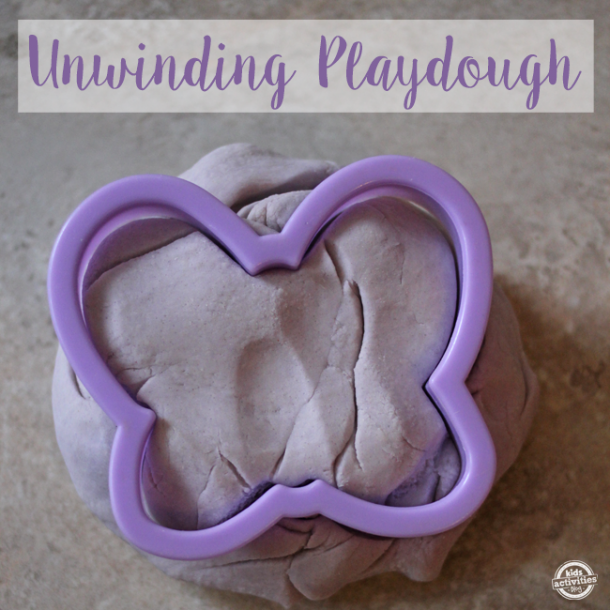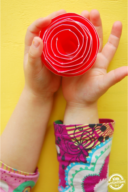Finding natural food coloring options are easier than you might think. I got started on this mission because I was concerned about all the food dyes and food coloring additives that I was seeing in my kids’ food. I am so excited about all of the natural food coloring & natural food dyes I have been able to find lately!

Why you should try Natural Food Dye
Some of us have food dye allergies or food dye sensitivities to contend with. When you look into the harmful effects that artificial coloring can have on you and your kids, while the results of scientific studies are mixed some of the side effects are a little scary.
Since there is no harm in trying to avoid some of these artificial dyes at home, I’m doing my best to try to limit the amount my traditional food dye that my family consumes.
This post contains affiliate links.

Organic Food Coloring
What are Natural Food Dyes made from?
It totally makes sense that fruits and veggies hold natural food dye! The brighter the shade of the rainbow, the better it can color your food. Depending on the fruit or vegetable being used, the coloring comes from the skin, or another area of the plant.
Before synthetic food dye was invented, this was the go-to when it came to dying both food and products meaning that we are just getting back to food coloring basics with natural food dyes. While almost any natural food dye alternative will produce a less vibrant or concentrated hue, you can leverage that for really lovely naturally colored foods.
Luckily, nowadays there are plenty of great options when it comes to buying a concentrated food based liquid or powder or learning how to make your own natural food dye.
What is the most natural food coloring?
The most natural food coloring is taking colors straight from nature like the bright red color of beet juice, the pink color of crushed strawberries or the purple tint that you can get from boiling red cabbage. The downside of taking color straight from foods is that it often is diluted or adds undesirable tastes. That is where natural food coloring solutions can come in handy.
How to remove All Natural Food Color From Skin
Any vegetable that has a strong enough pigment to be used as dye, does have the potential to stain the skin (blueberries vs. a fresh mani, anybody?).
Just proceed with caution–don’t wear your Easter dress while dying eggs. If you are concerned about this, use gloves while working with the dyes, and rock a cute matching apron set while you’re at it!
Worst case, a combination of water, baking soda, and white vinegar might do the trick. You can also try a little bit of salt and lemon.
How long does food coloring last on skin?
Vibrant food coloring can stain your skin causing discoloration that fades over time for up to 3 days. You can decrease the length of the discoloration by washing your hands with soap and vigorously rubbing under water.

Ways to make Natural Food Dyes at Home
There is also the option to make your own DIY food coloring.
Save money and have fun trying these great homemade food coloring recipes, and make natural food dye for frosting, or any of your other baking needs.
Here is a chart we made of things you can use to make natural food coloring.
1. DIY Natural Food Coloring Combinations
Follow this food coloring chart, from Nourishing Joy, to make your own natural food dye in so many great colors. She will show you how to use things like pure beet juice, pomegranate juice, beet powder, carrot juice, carrot powder, paprika, turmeric, turmeric juice, saffron, chlorphyll, matcha powder, parsley juice, spinach powder, red cabbage juice, purple sweet potatoes, purple carrots, blueberry juice, espresso, cocoa powder, cinnamon, black cocoa powder, activated charcoal powder and squid ink to make nearly any shade of food dye you need…naturally!

2. Homemade Naturally Colored Sprinkles
Thanks to this cool recipe from Eating Vibrantly, you can make your own rainbow sprinkles with natural food dye. It starts with a base of shedded coconut (genius) and then adds natural food coloring from the store or homemade food coloring like beetroot, carrot, red cabbage, spinach, turmeric powder, spirulina and bicarb soda to color the homemade sprinkles in the natural food color of your choice.

3. Red Jello Made with Natural Food Coloring
All Natural Recipes has a great way to make red Jell-O without the box, and without red dye. Red dye has been identified as one of the main sensitivity triggers so finding a way to make a yummy red Jello is awesome. Oh and it is super easy because you are using ingredients easily found in every super market like Knox unflavored gelatin and fruit juice.
4. Homemade Rainbow Cake with Natural Food Dye
Make this amazing rainbow cake, from Hostess With The Mostess. It’s full of bright colors, using all natural dyes for every layer. It all started when she made a traditional rainbow cake with traditional food dye and was surprised at the table talk around chemical food coloring. She took on the challenge and ended up using juice from: beets, carrots, spinach, blueberry and blackberries. From that list, she was able to create vibrant cake layer natural dye colors: red, orange, yellow, green, blue and purple.

5. DIY Natural Easter Egg Dye
I love this natural food coloring for dying Easter eggs! The tutorial from Your Homebased Mom is easy and informative. She will give you the combinations for naturally dying eggs: blue, green, blue gray, orange, yellow and pink. She uses ingredients for the DIY food coloring like: cabbage, onion skins, blueberries, paprika, turmeric and beets.
The colored Easter eggs are absolutely gorgeous!

6. Homemade Natural Red Food Coloring
Make your own red food coloring from beets, with this easy recipe from The Minimalist Baker. We mentioned the red jello above, but what if you want red frosting or to color another food red and want to avoid the artificial red coloring? This recipe is great because it is simple using just a beet. You can whip up the natural red food dye in less than 10 minutes.
7. Organic Food Dye For Buttercream Frosting
Try fresh strawberry buttercream icing , from Better Homes and Gardens, on your next cake, and it will be free of red dye! To create the pink color without artificial dyes, they suggest using beet juice, strawberry juice, strawberry powder or raspberry powder.
Also included in this natural food coloring article at BH&G is how to make the colors red, orange, yellow, green, blue, purple, brown, gray or black.

8. Homemade Natural Food Coloring For Snow Cones
Thanks to this yummy recipe from Super Healthy Kids, you can make delicious snow cones minus the dye. She used fruit and vegetable juices to dye the snow cone ice. Things like beets, strawberries, oranges, yams, carrots, celery stalks and green apple both color and flavor the icy treats.
9. DIY Natural Food Dye For Frosting
Make your favorite colors of frosting naturally with this great tutorial from One Handed Cooks! What I love about her approach is she starts with the ingredients you might have on hand and then works backward into the colors you can create. Check it out if any of these are in your kitchen: frozen raspberries, canned beets, raw carrots, oranges, spinach, frozen blueberries, or blackberries.

10. Homemade Paints that are Skin Safe
If your little ones love to paint, make them a dye-free version of their favorite finger paints, with this lovely idea from Fun At Home With Kids! She shows how to get absolutely vibrant color for making homemade paint naturally with beets, carrots, turmeric, spinach, frozen blueberries, brown rice flour in addition to almond milk or water.
11. Easy DIY Natural Green Food Dye
Use the natural color of spinach to make your own green food dye. With this recipe from Food Hacks, it IS easy being green! They will take you through the easy steps from adding fresh spinach to a pan, simmering, blending and then coloring food with this natural dye ingredient.
12. What is the Best Natural Food Coloring You Can Buy?
India Tree Natural Decorating Color is a favorite in my house. Not only are they non-GMO and chemical free, they are also Kosher.

India Tree Natural Decorating Color & Baking Supplies
It makes me feel good to know that I am not filling my kids’ baked goods with unhealthy ingredients. India Tree also offers:
Here are some other good natural food coloring alternatives & some of our favorite baking supplies:
- We love these organic sprinkles – Let’s Do Organic Sprinkles (they are also a bit cheaper than India Tree–trust me on ordering the 2-pack bundle, they go quick!).
- McCormick now has an inexpensive Nature’s Inspiration Food Color set of 3 colors: sky blue, berry and sunflower.
- Say bye to artificial dyes with Color Kitchen decorative food colors from nature set which includes the colors yellow, blue and pink.
- This traditional set of 4 colors that you can mix or match is derived entirely from pure vegetable juices and spices and contains the colors red, yellow, green and blue. It is from Watkins Food Coloring and reminds me of the set we used when I was growing up.
Sometimes I feel like it more expensive to switch to healthier products, but almost daily that is changing with more and more options available! I consider natural food dye, coloring and sprinkles to be investment pieces in my baking arsenal, because when stored properly, they last forever!
13. Natural Food Dye For Homemade Cosmetics and Bath Products
Think outside the kitchen, when it comes to more uses for natural food dye alternatives!
One of my favorite ways to spend girl’s night in with my other mom friends is by making our own lip balm and body scrub.
You can even use natural food coloring for soap making. These natural food coloring recipes above will teach you how you can safely add color to your creations!

14. Natural Food Dyes For Play Dough
The uses for natural food dye are limitless! The next time you make homemade play dough, use some of the natural food dyes you might have created for the recipes listed above.
Here are a few of my favorite homemade play dough recipes, that you incorporate natural dye into:
- Unwinding Play Dough Recipe
- Candy Cane Play Dough (this one remains a favorite in my house, year-round!)
- 100 Homemade Play Dough Recipes
Natural Food Coloring FAQs
What is food colouring made out of?
Traditional food coloring is made out of unfamiliar ingredients that are often made in a lab: Propylene Glycol, FD&C Reds 40 and 3, FD&C Yellow 5, FD&C Blue 1 and Propylparaben. Natural food coloring is different using things that occur in nature originating in plants, animals and organic material:
“Some of the most common natural food colorings are carotenoids, chlorophyll, anthocyanin, and turmeric. Many green and blue foods now have matcha, cyanobacteria, or spirulina for color.”
Spoon University, What is Food Coloring Made of and is it safe to eat?
Is it safe to eat food coloring?
All food coloring on the market is approved by the FDA. While there doesn’t seem to be conclusive evidence that food dyes are harmful, many people are looking for natural alternatives that don’t contain chemicals.
Is food dye and food coloring the same thing?
Food dye vs. food coloring. My research shows that most places use these words interchangeably. Originally it appears that food dye may refer to a more concentrated version and that food coloring contains that food dye.
What can food coloring be used for?
Food coloring can be used for so many things beyond coloring food. Here at Kids Activities Blog we have used it to make gel paint, play with shaving cream, color crystals, make bathtub paint, color homemade playdough, and in homemade bath salts.
More Natural Food and Natural Product Movement Inspiration
Check out these articles with healthy food and cleaning product tips, and fun ways to engage your kids into having interest in their fruits and veggies, and much more!
- 10 Must-Have Essential Oils for Moms
- Farmers Market Fun For Kids
- How to Feed Your Family Organic Food On the Cheap
- Essential Oils for the Laundry Room
- My Child Won’t Eat Vegetables
- Easy Healthy Recipes Using the #1 Technique For Vegetables Kids Love
- 30 Natural Cleaning Recipes Using Essential Oils
Do you have any natural food dye alternative hacks you would like to share? Comment below!





















I love this because I got so worried about all the artificial coloring and artificial food dyes my kids (and me) were ingesting without knowing it! It is crazy when you start reading the labels of your food and realize how many chemicals we put into our body.